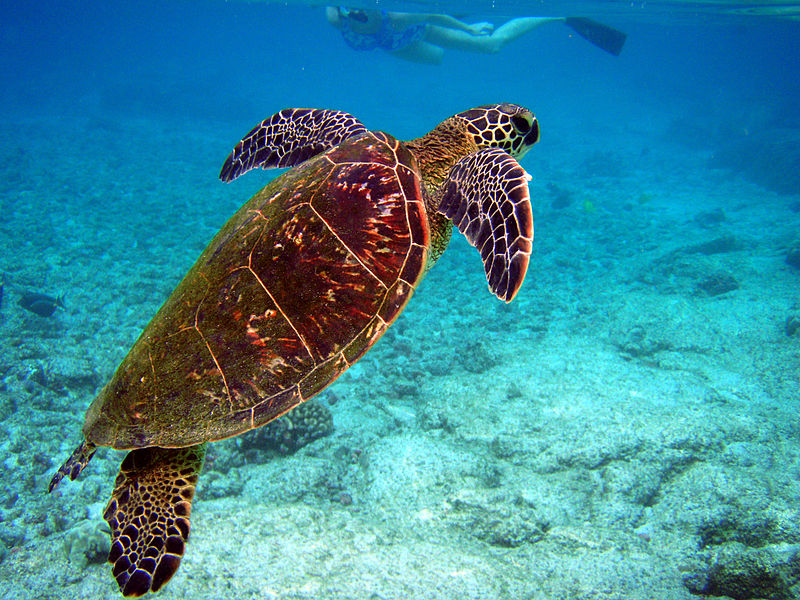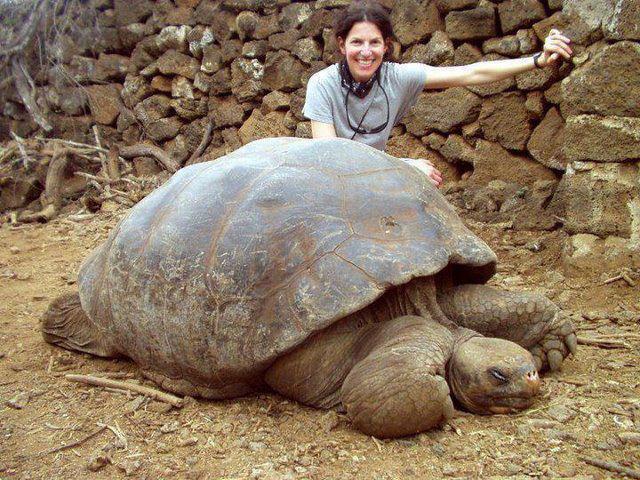


Turtles
Do you carry your house with you everywhere you go? What we do when we want to go to sleep in our bed we run home. We have to make our bed with sheets and blankets to keep us warm. The turtle is cold-blooded and keeps pace with the environment and is comfortable all the time. He is always at home for his house is on his back. He only has to close his eyes and go to sleep wherever he happens to be. Some kinds of turtles live in the water and some of them live on the land. But the biggest ones are marine turtles or you can call them a tortoise if you like, because a turtle is a tortoise and a tortoise is a turtle. Some of them will grow to be 6 feet long and weigh 2,000 pounds. Turtles breathe air and have to come to the top of the water regularly to catch a breath. And they lay their white eggs on the land where it is dry and warm. They lay their soft-shelled eggs in a hole in the sand and cover them up and do not do anything to care for them. When the little turtles hatch they head for the water and the parents have nothing to do with feeding them or keeping them safe. Different species mature later than others and may not breed for many years. There are unique designs on the shell of the turtle and the colors are green and gray and brown and some with some spots and there is a kind with red spots. Wild turtles can live to be very old but many are raised on turtle farms and sold for food. Also lots of the wild ones are caught to be sold and eaten. People have them for pets and they eat greens by using their sharp ridged knives instead of teeth.


A CURIOUS HOUSE AND HOUSEKEEPER.
DID you ever live near a pond ? If you have, maybe you have seen a queer animal that lives there, who always carries his house on his back. The roof is made of hard shell, and has short partitions on the sides to hold it firmly above the floor underneath. It has strong ribs to hold it in shape.
In between the roof and the floor the animal lives, and, strange to say, is 'fastened to his house so that he cannot leave it. At the opening in the fore-part of the house, he can thrust out his head and two fore legs; and in the back opening, his tail and two hind legs. Whenever he sees any danger coming, he quickly draws in his head and legs, and looks not at all like an animal, but more like a piece of leather, or a very dirty shell.
He lives in the water a part of the time, but delights to sit on an old log and dry the roof of his house in the sun. His common name is mud-turtle.
He has a cousin, somewhat larger than he, but not nearly so good natured. Indeed, he is so very cross that people call him a snapping-turtle. Neither of these animals have any teeth, but their jaws are very hard and horny and hook over in front a little, so that they can bite things in two.
This snapping-turtle is very fond of fishes and small animals, and he is so fond of eating that he sometimes kills young alligators. But he gets paid back for eating other animals; for people often catch him, and cook and eat him. Sometimes it is not so easy to get hold of him even after he is caught; for he is so very savage that if a finger or toe comes within his reach, he stretches out his long neck, and bites it off as easily as you would cut leaves off with a pair of scissors.
Another kind of turtle lives on the land, and does not like to get near the water at all. He is very fond of lettuce, which he bites off as nicely as you could do. He likes to drink milk, and how do you suppose he does it? He opens his mouth, and scoops up milk with his lower jaw, just as you would, with a spoon, then he tips back his head, and lets it run down his throat.
One man had a tame turtle, that he let stay in the house. It was fond of the fireside, and would stay for hours on a footstool by the fire. If it was taken off ever so many times a day, it would always come back and climb up on the stool again.
It made a noise that sounded like the mewing of a little kitten.
The next time you find one of these strange creatures, you may like to turn him over and look at him; but be careful to take a long stick to do it with, or your fingers may suffer. It is very well to look at animals and bugs enough to see how they are made, but we hope that none of you will take delight in tormenting them, as so many children do.
W. E. L.